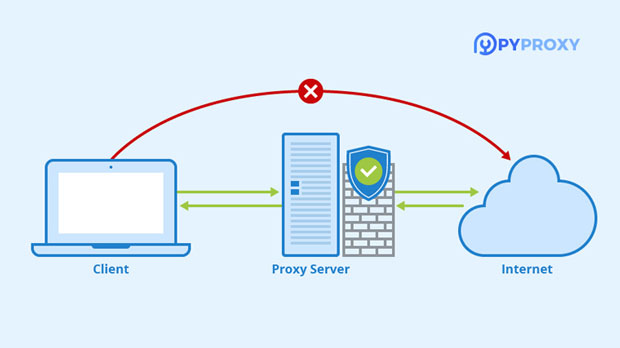In the world of web scraping, data gathering, and online privacy, the importance of proxies cannot be overstated. Among various proxy solutions available, reverse connection rotating proxies have emerged as a popular choice for many businesses and individuals. PYPROXY and Proxyium are two significant players in this field, offering dynamic proxy services that help users to hide their IP addresses and bypass geo-restrictions. The quality of IP addresses provided by these services plays a crucial role in ensuring anonymity, efficiency, and reliability. This article will analyze the IP quality of PyProxy and Proxyium within the context of reverse connection rotating proxies, providing a comprehensive review and comparison. Understanding Reverse Connection Rotating ProxiesBefore diving into the specifics of PyProxy and Proxyium’s IP quality, it’s essential to understand what reverse connection rotating proxies are and how they work. Reverse connection proxies, unlike standard forward proxies, allow the proxy server to initiate connections to the target server. This is useful for a variety of reasons, including providing a greater level of anonymity for the client and circumventing geographical restrictions. By rotating through different IP addresses continuously, reverse connection proxies also make it difficult for target websites to block or identify users based on their IP.In essence, the rotating feature ensures that each time a request is made, a different IP address is used, which is crucial for web scraping, data collection, and maintaining online privacy.Factors Affecting IP Quality in Reverse Connection ProxiesWhen evaluating the IP quality in reverse connection rotating proxies, several key factors need to be considered. These include speed, reliability, anonymity, geographic diversity, and overall performance.1. Speed and Latency: Speed is one of the most critical aspects of any proxy service. High-quality IP addresses should provide fast response times, as delays in connecting to the target server can hinder web scraping efforts and affect user experience. Latency, or the delay between sending and receiving data, can significantly impact the efficiency of the proxy service. High-quality proxies tend to have lower latency and faster speeds, which directly affect the user’s ability to gather data efficiently.2. Reliability: The consistency of the IP addresses provided is another crucial factor. Unreliable proxies often result in dropped connections, failed requests, and errors, which can compromise the entire operation. High-quality proxies from reliable providers like PyProxy and Proxyium ensure stable and uninterrupted connections.3. Anonymity and Security: One of the primary reasons for using reverse connection proxies is to maintain anonymity and secure data. The best proxies mask the user’s real IP address, making it nearly impossible for websites or services to track the origin of the request. Additionally, security is a priority, and a high-quality proxy ensures that no data leaks occur during the process.4. Geographic Diversity: Geographic diversity is an important factor when evaluating proxy quality. Some users need proxies from specific countries or regions to bypass geo-restrictions, such as accessing content or services available only in certain areas. The higher the geographic diversity of the IP pool, the more flexible the proxy service becomes in catering to different users' needs.IP Quality of PyProxy in Reverse Connection Rotating ProxiesNow that we understand the factors that impact the quality of reverse connection proxies, let's dive deeper into the IP quality provided by PyProxy.1. Speed and Latency: PyProxy is known for its relatively fast proxy speeds and low latency, making it a good option for applications that require real-time data access. Its large pool of rotating IPs ensures that users can consistently access servers with minimal delay, allowing them to conduct tasks such as web scraping or online research with efficiency.2. Reliability: PyProxy provides a high level of reliability in its proxy connections. With an extensive IP network, it is less likely for users to encounter downtime or connection issues. However, some users report occasional connection instability, particularly during peak usage times, which can result in slower response times or failed requests.3. Anonymity and Security: In terms of anonymity, PyProxy is highly rated. Its IP addresses are dynamic and regularly rotated, which means it is difficult for websites to track users or identify patterns. Security is also a strong feature, with encryption protocols in place to protect users from potential data breaches.4. Geographic Diversity: PyProxy offers a wide range of IPs from various regions, which is beneficial for users who need to access content from specific countries. The geographic diversity ensures that users can bypass geo-restrictions and access region-specific services, making it an appealing choice for businesses with global data collection needs.IP Quality of Proxyium in Reverse Connection Rotating ProxiesNow, let’s examine Proxyium’s IP quality in the context of reverse connection rotating proxies.1. Speed and Latency: Proxyium offers a robust proxy service with decent speed and low latency. While not as fast as some of the top-tier providers, Proxyium still delivers a satisfactory experience for most users. However, users requiring extremely low latency for high-frequency tasks may find that Proxyium does not always meet their needs.2. Reliability: Proxyium’s IP addresses are generally reliable, but users may occasionally experience slower connection times or temporary outages during heavy traffic periods. However, the service is generally consistent, and most users report minimal issues with connection reliability.3. Anonymity and Security: Proxyium emphasizes security and anonymity, offering rotating IPs and robust encryption. The service does a good job of protecting users’ data, ensuring that their real IP addresses remain hidden and preventing third parties from tracking their activities. This makes Proxyium a solid option for those seeking privacy and security while using proxies.4. Geographic Diversity: Proxyium offers a wide range of IPs from different geographical regions, but it may not be as diverse as PyProxy in terms of available locations. However, for most users, Proxyium’s geographical coverage is adequate, providing access to the majority of regions necessary for bypassing geo-blocks and conducting web scraping.Comparison of PyProxy and ProxyiumWhen comparing the IP quality of PyProxy and Proxyium in reverse connection rotating proxies, both services offer a range of benefits and drawbacks. - Speed and Performance: PyProxy tends to provide faster speeds and lower latency compared to Proxyium, making it a more suitable choice for real-time applications that require high-speed access. However, Proxyium can still provide satisfactory speeds for most users and offers competitive performance in general.- Reliability: Both services offer reliable proxies, but PyProxy’s larger network of IPs tends to ensure fewer issues with dropped connections and outages. Proxyium, while reliable, may experience occasional slowdowns during peak periods.- Anonymity and Security: Both services excel in maintaining user anonymity and security, offering rotating IPs and encryption protocols to ensure safe and private browsing.- Geographic Coverage: PyProxy has a broader geographical range, which is beneficial for users requiring diverse region-specific IPs. Proxyium, while offering a reasonable geographic spread, may not meet the needs of users with more specific location requirements.In conclusion, both PyProxy and Proxyium provide quality IP addresses in reverse connection rotating proxies, with each offering unique strengths. PyProxy excels in speed, reliability, and geographic diversity, making it a strong contender for users who require high-performance proxies with global coverage. On the other hand, Proxyium is a solid choice for users who prioritize anonymity and security, although it may not always match PyProxy in terms of speed and geographic diversity.Ultimately, the choice between these two services will depend on the specific needs of the user. Whether it's speed, reliability, geographic diversity, or anonymity, both PyProxy and Proxyium provide valuable solutions to users looking for reverse connection rotating proxies.
Mar 25, 2025
![arrow]()



























































